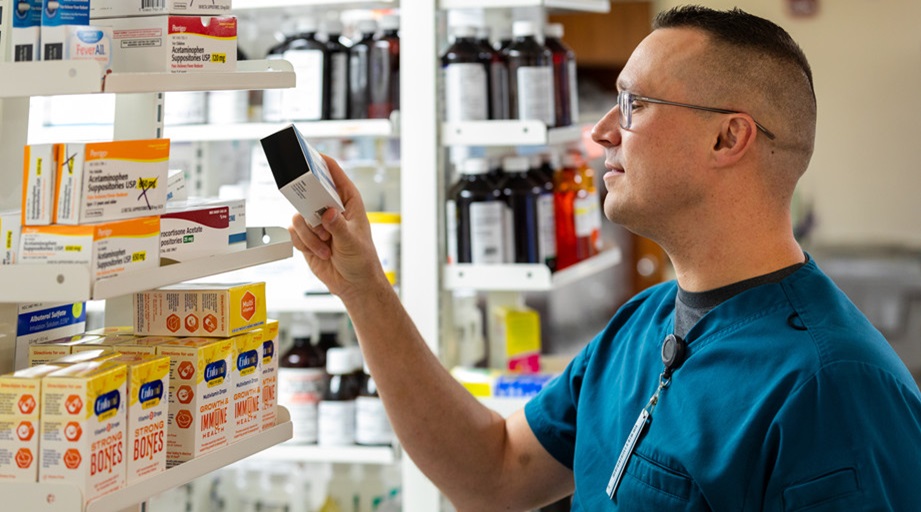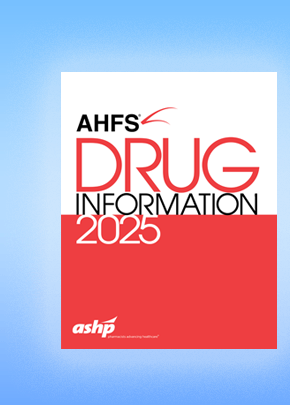
Organizations that haven’t yet incorporated pharmacogenetics into patient care need to do so, says Shannon Manzi, director of the clinical pharmacogenomics service at Boston Children’s Hospital.
“We are moving towards a precision medicine arena that is going to require pharmacists and hospitals . . . to be able to understand, incorporate, and use this data,” Manzi said. “The public is going to demand this, and I think that we need to get ahead of it.”
Pharmacogenetic tests can identify genetic sequences, such as those involved in the cytochrome P-450 isozyme system, whose phenotypes are known to affect drug metabolism. With test results in hand, clinicians can preemptively alter drug dosages to ensure their effectiveness or eliminate from consideration medications that won’t work as intended.
Pharmacy students receive some information about pharmacogenetics as a result of a 2016 revision of the Accreditation Council for Pharmacy Education’s standards for the pharmacy profession. But information on the topic is also readily available outside of the classroom setting.
Manzi said that all pharmacists should learn about PharmGKB, a federally supported clearinghouse of pharmacogenetic information. PharmGKB includes links to evidence-based clinical guidelines, including those from the Clinical Pharmacogenetics Implementation Consortium (CPIC).
CPIC was launched in 2009 as a partnership between PharmGKB and the National Institutes of Health (NIH) Pharmacogenomics Research Network. CPIC receives funding from NIH and is managed by St. Jude Children’s Research Hospital in Memphis, Tennessee, and Stanford University in California. ASHP has endorsed several of CPIC’s clinical practice guidelines.
Manzi said CPIC’s guidelines are the cornerstone of the pharmacogenetics service at Boston Children’s Hospital. But she acknowledged that learning how to interpret and use the information in the guidelines can be challenging.
“You have to understand what it is you’re looking at. And I think that’s part of the reason why places may not feel they have the expertise to implement a [pharmacogenetics] program,” Manzi said.
Manzi credited James Hoffman and his colleagues at St. Jude Children’s Research Hospital with helping Boston Children’s Hospital establish its own pharmacogenetics service.
Hoffman is the chief patient safety officer for St. Jude as well as a leader of the informatics working group at CPIC, which is addressing technical barriers to the implementation of the guidelines in electronic health record (EHR) systems.
Hoffman said the CPIC informatics group has spearheaded the creation of supplementary tables for the guidelines that contain standardized language for use in clinical decision support tools within EHR systems.
The tables include statements about conditions that may serve as triggers for ordering a sequencing panel, explanatory language about interpreting test results, and possible clinical actions.
“Next step, we plan to make an API—an application program interface—so that someone could consume the guideline content and easily put it in their [EHR] environment,” said Hoffman. “That’s real exciting stuff to me, to really have the guidelines be used” more extensively.
Christina Aquilante, professor at the University of Colorado (UC) Skaggs School of Pharmacy and Pharmaceutical Sciences in Aurora, said that incorporating evidence-based data on important drug–gene pairs into UCHealth’s EHR system will be critical to the success of the pharmacogenetics program she’s helping to build.
“You can have guidelines and you can have genetic results,” she said. “But in the ideal world, . . . you want an electronic health record, and then you want clinical decision support tools that basically interface the genetic results in the health record with an alert” for a relevant drug.
Aquilante said these alerts can recommend the ordering of a pharmacogenetic test before administering a specific drug, if appropriate, or suggest actions to take if pharmacogenetic test results that relate to the use of a prescribed medication are available.
She said UCHealth’s pharmacogenomics implementation committee, which she cochairs, is relying heavily on informaticists and information technology colleagues to develop a system that will help clinicians use pharmacogenetics in their everyday work.
“It’s a process,” Aquilante said. “There is no magic wand.”
But she said building pharmacogenetics into patient care need not be intimidating.
“Genetic information is just another tool in our clinical pharmacology toolbox. It’s just another piece of the clinical pharmacology puzzle, just like kidney function, just like liver function, the assessment of drug–drug interactions, the assessment of drug allergies,” Aquilante said.
Hoffman said St. Jude, through its PG4KDS pharmacogenetics implementation program, routinely tests for the presence of 8 genes that can alter the effectiveness of 22 drugs used at the hospital. He said the testing program got underway after an analysis found that about half of the hospital’s patients would eventually need to be treated with “a drug where pharmacogenetics is relevant.”
As of last November, nearly 4,000 health records for patients seeking care at St. Jude contained data obtained through the PG4KDS program, according to the hospital.
Manzi likewise said it’s common for drug–gene pairs with the strongest evidence base to affect the way Boston Children’s Hospital uses medications. She said CPIC’s guidelines are the basis for decision support tools in the hospital’s EHR system.
For hospitals that are wondering where to begin bringing pharmacogenetics to clinical care, Manzi said guidelines on thiopurine use in patients with a genetic polymorphism causing altered thiopurine methyltransferase (TPMT) function are a good starting point.
“The TPMT [gene] variants can alter dosing by 90%,” she said. “Ten percent of the population carries a loss-of-function variant, and so your number needed to test in order to find a patient who requires dose alteration or a different drug selection is 1 out of 10.”
Manzi said that percentage has held true through 6 years of pharmacogenetic testing in patients at the hospital who are prescribed thiopurines, mostly for the treatment of gastrointestinal conditions such as Crohn’s disease or ulcerative colitis.
Although pharmacogenetic testing is focused on genes that affect drug metabolism rather than analysis of a patient’s entire genome, Manzi said patient privacy is an important issue. She said Boston Children’s Hospital has always required clinicians to obtain consent from patients or their representatives in order to run a pharmacogenetic panel.
And as test panels expand, Manzi said, it’s possible that the scope of testing will “bleed into” parts of the patient’s genome that have implications beyond drug metabolism.
“This is going to go places we don’t know yet,” she said. As a result, she said, the hospital is evaluating its consent process as well as the role of the geneticist and when and how to use genetic testing.
|
AJHP Editor in Chief Daniel Cobaugh urged pharmacists seeking resources on pharmacogenetics to review the journal’s December 1, 2016, theme issue on precision medicine. He said the articles are a critical resource for implementing pharmacogenetics in inpatient and outpatient settings, integrating pharmacogenetics into electronic health record systems, and training pharmacists, pharmacy residents, and pharmacy students in the use of pharmacogenetic data. “The . . . precision medicine theme issue focused specifically on integration of pharmacogenomics information into the use of medications and pharmacists’ roles in initiating, monitoring, and modifying patients’ medication regimens based on the individual patient’s genomic information,” Cobaugh said. Another important resource, said Vicki Basalyga, director of ASHP’s Section of Clinical Specialists and Scientists, is the Pharmacogenomics Resource Center maintained by the section’s emerging sciences advisory group. Basalyga said the resource center includes a brief educational series on pharmacogenetic testing and incorporating the Clinical Pharmacogenetics Implementation Consortium (CPIC) implementation guidelines into clinical practice. “ASHP is the only pharmacy organization that endorses these guidelines,” Basalyga said. “We work with CPIC on a regular basis to prioritize guideline endorsement.” ASHP has also developed a professional certificate program in pharmacogenomics that will be available in September. |
[This news story appears in the June 15, 2018, issue of AJHP.]








